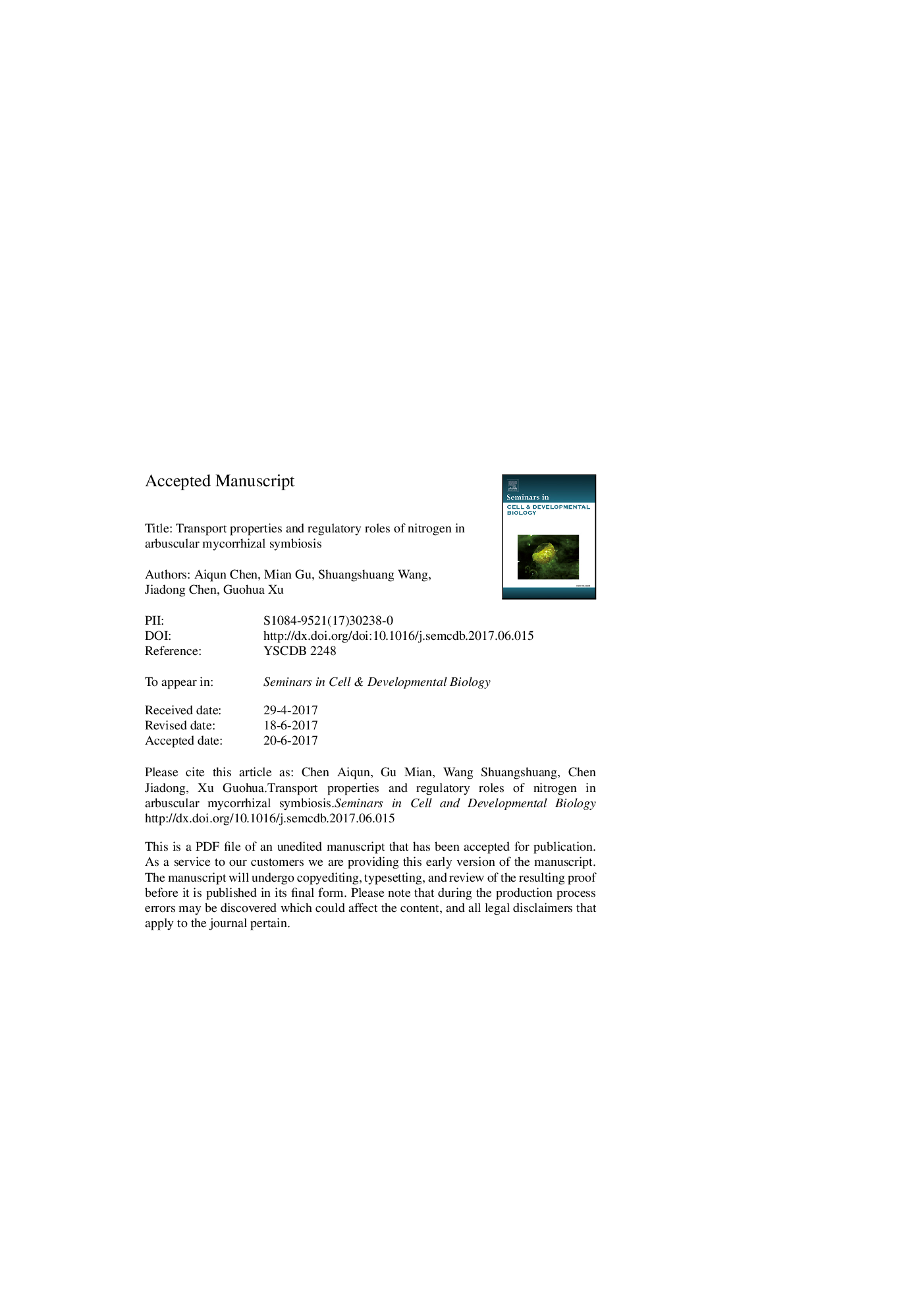| Article ID | Journal | Published Year | Pages | File Type |
|---|---|---|---|---|
| 8479791 | Seminars in Cell & Developmental Biology | 2018 | 28 Pages |
Abstract
Many terrestrial plants can form root symbiosis with beneficial microorganisms for enhancing uptake of mineral nutrients or increasing fitness to adverse environmental challenges. Arbuscular mycorrhizal (AM) symbiosis that is formed by AM fungi and the roots of vascular flowering plants is the most widespread mutualistic associations in nature. As a typical endosymbiosis, AM interactions involves the differentiation of both symbionts to create novel symbiotic interfaces within the root cells, and requires a continuous nutrient exchange between the two partners. AM plants have two pathways for nutrient uptake, either direct uptake via the root hairs and root epidermis at the plant-soil interface, or indirectly through the AM fungal hyphae at the plant-fungus interface. Over the last few years, great progress has been made in deciphering the mechanisms underlying the AM-mediated modulation of nutrient uptake processes, and an increasing number of plant and fungal genes responsible for transporting nutrients from the soil or across the intraradical symbiotic interfaces have been identified and functionally characterized. Here, we summarize the recent advances in the nitrogen uptake, assimilation and translocation in the AM symbiosis, and also explore the current understanding of how the N status and interplay with C and P in modulating the development of AM associations.
Keywords
Related Topics
Life Sciences
Biochemistry, Genetics and Molecular Biology
Cell Biology
Authors
Aiqun Chen, Mian Gu, Shuangshuang Wang, Jiadong Chen, Guohua Xu,
